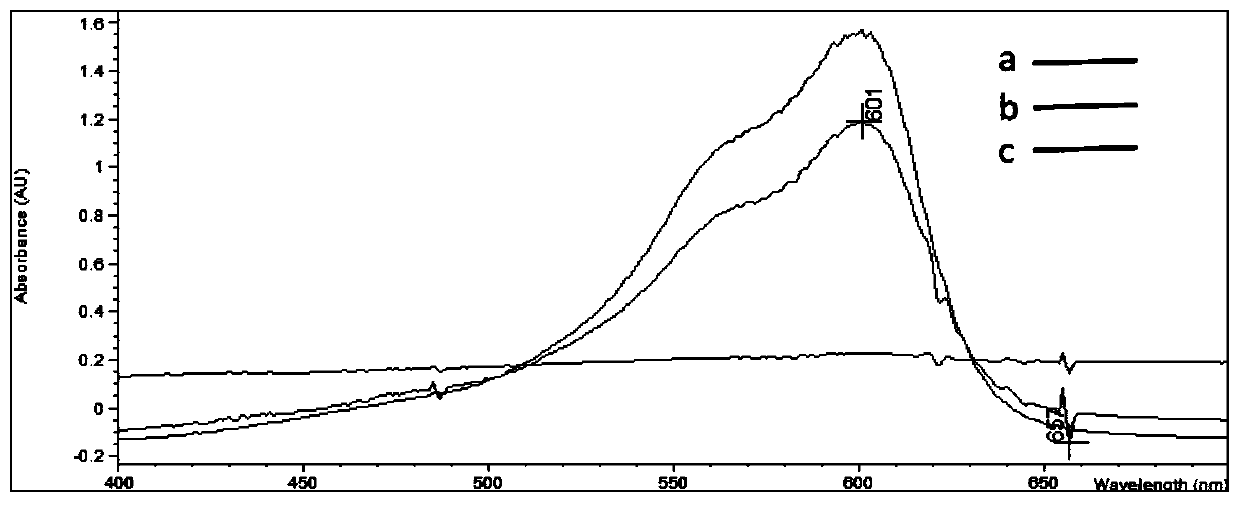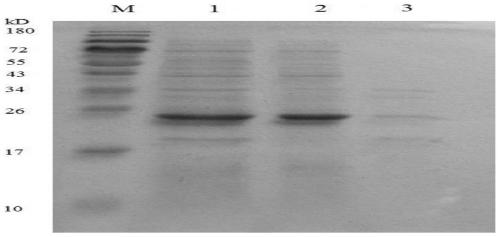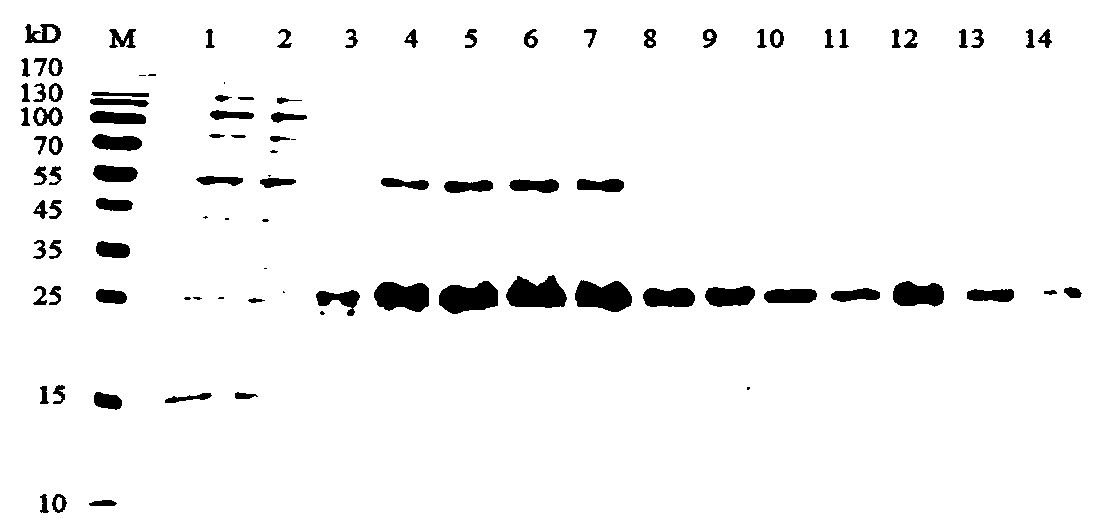An electrochemical receptor sensor for detecting β-lactam antibiotics, preparation method and application thereof
A technology of lactams and antibiotics, applied in the direction of material electrochemical variables, scientific instruments, instruments, etc., can solve the problems of time-consuming, complicated operation, etc., and achieve the effects of high sensitivity, good stability, and wide detection range
- Summary
- Abstract
- Description
- Claims
- Application Information
AI Technical Summary
Problems solved by technology
Method used
Image
Examples
Embodiment 1
[0036] Example 1 Preparation of an electrochemical receptor sensor for detecting β-lactam antibiotics
[0037] S1: Preparation of graphene thionine complex.
[0038] Ultrasonic suspend 2mg graphene in 1mL PBS solution, add 2mL 5mg / mL thionine solution and stir at room temperature for 24h; centrifuge at 4000r / min for 5min, wash 3 times with ultrapure water, resuspend 1mg graphene thionine complex in 1mL PBS buffer.
[0039] Characterize the graphene thionine composite prepared above with a UV-Vis spectrophotometer, such as figure 1 It can be seen that the modification was successful, and it was stored at 4°C for future use.
[0040] S2: Induced expression and purification of receptor mutein.
[0041] Induced expression:
[0042] 1. Inoculate a single colony of Escherichia coli pET-28a(+)-BlaR-CTD (known and public) in LB / Kan broth and cultivate for 12h;
[0043] 2. Take 10 mL of bacterial liquid and add it to 1 L of LB broth and 500 μL of kanamycin, place it in a shaker at...
Embodiment 2
[0053] Example 2 Obtaining signal probes
[0054] Preparation of Enzyme Labels
[0055] 1. Weigh 6.18 mg of ampicillin, dissolve it in 1 mL of PBS, pour it into a brown bottle containing magnetic particles, and record it as liquid A;
[0056] 2. Weigh 2.4mg of carbodiimide (1-Ethyl-3-(3-dimethylaminopropyl)carbodiimide, EDC), dissolve it in 1mL of PBS, add it dropwise to solution A, and weigh N-hydroxysuccinimide (N-Hydroxysuccinimide, NHS) 1.80mg, dissolved in 1mL of PBS, added dropwise to the reaction solution, stirred at room temperature for 2h;
[0057] 3. Weigh 4.3mg of HRP, dissolve it in 2mL of PBS, stir at room temperature until dissolved, and record it as solution B;
[0058] 4. Slowly add solution A to solution B dropwise, and stir for 10 hours at 4°C in the dark;
[0059] 5. Collect the solution, put it into PBS at 4°C for dialysis for 3 days, replace the PBS twice a day, add the same amount of glycerol after the dialysis and freeze at -20°C;
[0060] 6. Measure...
Embodiment 3
[0066] The electrochemical characterization of embodiment 3 working electrode
[0067] In order to monitor the interface properties of electrochemical immunosensors, electrochemical impedance spectroscopy (EIS) and cyclic voltammetry (CV) were used in this study to verify the layer-by-layer modification of the electrodes. The detection conditions of cyclic voltammetry were: voltage -0.2-0.8V, The scanning rate is 50mV / s; the detection conditions of electrochemical impedance spectroscopy: the frequency range is 10-2-105Hz, and the amplitude is 10mV. The electrochemical impedance diagram of the electrode self-assembly process is shown in Figure 7 As shown, the bare GCE electrode shows a very small arc (b scatter point), when the bare GCE electrode is modified with GO / TH, the radius of the arc is significantly reduced and even becomes a straight line (a scatter point), such The results indicated that GO / TH could promote the transfer of [Fe(CN)6]3- / [Fe(CN)6]4- electrons. Howeve...
PUM
| Property | Measurement | Unit |
|---|---|---|
| Sensitivity | aaaaa | aaaaa |
| correlation coefficient | aaaaa | aaaaa |
Abstract
Description
Claims
Application Information
 Login to View More
Login to View More - R&D
- Intellectual Property
- Life Sciences
- Materials
- Tech Scout
- Unparalleled Data Quality
- Higher Quality Content
- 60% Fewer Hallucinations
Browse by: Latest US Patents, China's latest patents, Technical Efficacy Thesaurus, Application Domain, Technology Topic, Popular Technical Reports.
© 2025 PatSnap. All rights reserved.Legal|Privacy policy|Modern Slavery Act Transparency Statement|Sitemap|About US| Contact US: help@patsnap.com



